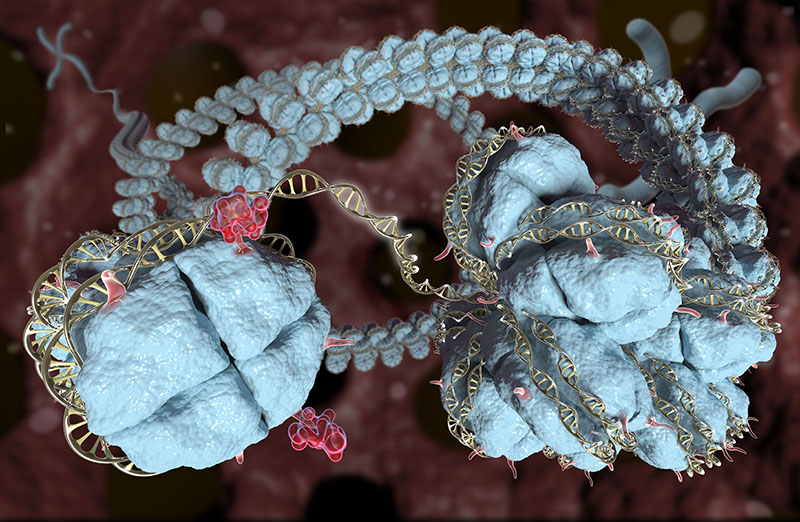Owning a business is not easy, but it has a few incredible benefits. One of those perks is the opportunity to focus our 3D illustration / animation company capabilities on subject matter of personal interest and curiosity. For us, that subject is biological science.
Our online gallery includes visuals related to both plants and animals. The gallery has a few graphics related to plants, but the majority are micro, macro, cellular depictions of animal species, e.g. cattle, horses, pigs, cats, dogs, humans.
We use 3D illustration and animation tools to make biological content available and understandable to a worldwide audience– crossing language barriers and levels of technical knowledge.
Category Archives: Genetics
“Curiouser and Curiouser”*
Our illustration at right, “Gene Regulated Transcription,” appeared in last year’s Medical Illustration SourceBook. Briefly, the illustration shows an unwound segment of DNA made available for use as a blueprint to create, e.g., cell membranes, enzymes, hormones, etc.
I loved the illustration but wasn’t keen on submitting it to the SourceBook– the science behind the illustration is complicated, complex, and far-removed from our everyday experiences.
Now there is a book by Pulitzer Prize winning science reporter / author, Amy Ellis Nutt, that connects the world of genes and DNA to people in the world around us. Becoming Nicole is the true story of two identical twin boys who had obvious differences in gender identification from an early age. Identical twins with identical DNA, but variation in genetic blueprint reading resulted in twins that are no longer identical.
*Lewis Carroll from Alice’s Adventures in Wonderland & Through the Looking-Glass


